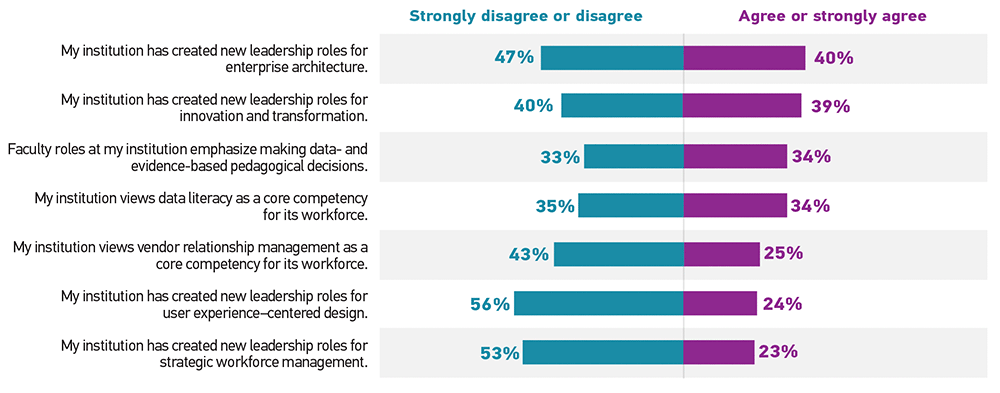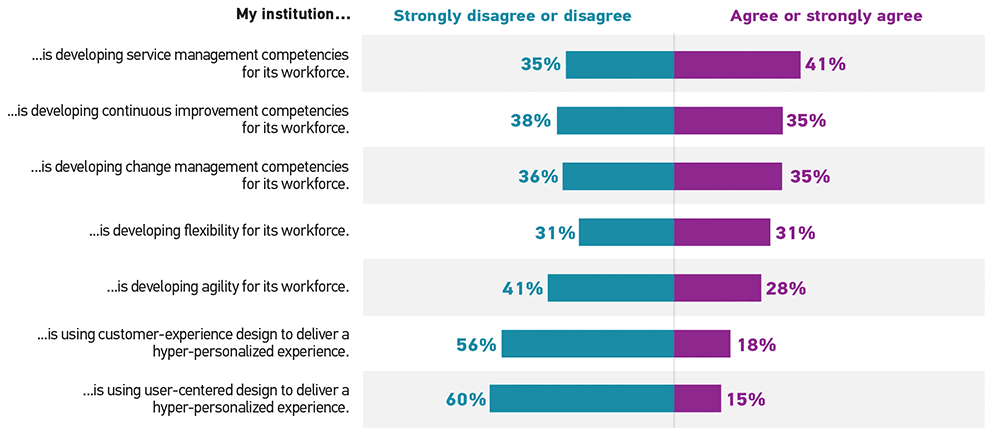Digital Transformation: Workforce Shifts
Various workforce shifts signal the presence of and engagement in Dx at an institution. The Dx workforce shifts identified below are being adopted at a plurality of responding institutions. It is important to note that nearly all trends and aspects of Dx have a sizable percentage of institutions currently moving forward…with others already lagging behind.
What Are Institutions Doing?
Researchers are changing how they work by collaborating with students and other faculty and professionals, learning new research techniques, adopting highly collaborative approaches to research, and blurring and re-forming the boundaries between academic disciplines (see figure 8).

Institutions are creating new leadership positions in the areas of student success and data and analytics (see figure 9).

As institutions increasingly rely on both enterprise architecture and business skills across their workforce, faculty are being encouraged to take on more advising, are adapting teaching practices to reach all student demographics, and are using new teaching techniques and tools (see figure 10).

Institutions have an increased need for data skills and data literacy across all fields (see figure 11).

What Areas Are Opportunities for Improvement?
Institutions are not creating new leadership positions in strategic workforce management, user experience–centered design, enterprise architecture, and innovation and transformation (see figure 12).

Institutions are not using customer-experience or user-centered designs to deliver a hyper-personalized experience (see figure 13).

Are the Necessary Supports in Place?
Institutions are overwhelmingly committed to diversity, equity, and inclusion (DEI) in the workforce (see figure 14).

Institutions are not taking an agile and flexible approach to restructuring their workforce and nurturing their talent pipeline (see figure 15).
